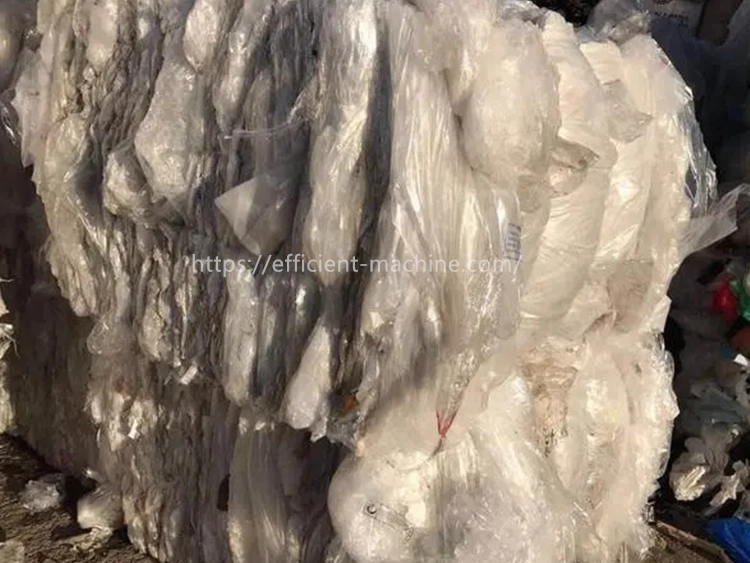Applications des lignes de recyclage de films plastiques PP PE
Applications des lignes de recyclage de films plastiques PP PE
Les déchets plastiques sont devenus un problème environnemental urgent dans le monde entier. Parmi les différents types de plastiques, le polypropylène (PP) et le polyéthylène (PE) sont deux des matériaux les plus couramment utilisés, notamment dans les applications de films. Le recyclage de ces plastiques via des lignes de production spécialisées contribue non seulement à réduire l’impact sur l’environnement, mais ouvre également de nombreux domaines d’application qui contribuent à l’économie circulaire.
Découvrez le recyclage des films plastiques
Le PP et le PE font partie des plastiques les plus polyvalents, largement utilisés dans l'emballage, l'agriculture et les biens de consommation en raison de leurs excellentes propriétés telles que la durabilité, la flexibilité et la résistance à l'humidité. Les formes courantes de films PP et PE comprennent les sacs alimentaires, les films étirables, les films rétractables et les films agricoles. À mesure que la demande pour ces produits continue de croître, le besoin de méthodes de recyclage efficaces pour gérer les déchets plastiques augmente également.
Lignes de recyclage de films plastiques Processus de recyclage pour les films PP et PE
Le processus de recyclage des films PP et PE comporte généralement plusieurs étapes :
- Collecte : Collecte de films usagés provenant de diverses sources, notamment les ménages, l'agriculture, les établissements commerciaux et les sites industriels.
- Tri : Tri des films en fonction du type de matériau et de la couleur. Cette étape est essentielle pour garantir la qualité du produit recyclé.
- Nettoyage : Élimination des contaminants tels que la saleté et autres impuretés pour éviter les problèmes pendant le traitement.
- Broyage : Broyage du film nettoyé en morceaux plus petits pour faciliter son traitement.
- Granulation : Faire fondre le matériau broyé et le transformer en granulés pouvant être utilisés pour fabriquer de nouveaux produits.
Domaines d'application des granulés de plastique PP et PE recyclés
- Industrie de l'emballage
Les pellets de PP et PE recyclés peuvent être retraités pour créer de nouveaux matériaux d'emballage. Cela inclut des produits tels que des sacs, des emballages et des conteneurs. L’utilisation de matériaux recyclés réduit non seulement la demande de plastiques vierges, mais répond également à la demande des consommateurs en solutions d’emballage durables.
- Matériaux de construction
Le PP et le PE recyclés peuvent être utilisés pour fabriquer des matériaux de construction tels que du bois plastique, des tuiles et des panneaux isolants. Ces matériaux sont légers, résistants à l’humidité et nécessitent moins d’énergie à produire que les matériaux traditionnels.
- Pièces automobiles
L'industrie automobile utilise de plus en plus de plastiques recyclés pour diverses pièces telles que les tableaux de bord, les panneaux de porte et les protections de soubassement. L'utilisation de PP et PE recyclés contribue à réduire le poids total du véhicule, améliorant ainsi le rendement énergétique et réduisant les émissions.
- Biens de consommation
De nombreux articles du quotidien, notamment des jouets, des meubles et des articles ménagers, peuvent être fabriqués à partir de PP et PE recyclés. Les marques capitalisent sur la tendance du développement durable et font la promotion de produits fabriqués à partir de matériaux recyclés pour attirer les consommateurs soucieux de l'environnement.
- Applications agricoles
Les films recyclés peuvent être utilisés en agriculture, comme le paillis et les couvertures de serres. Ces produits augmentent non seulement les rendements des cultures, mais favorisent également des pratiques agricoles durables en réduisant la dépendance aux plastiques vierges.
- Textiles
Des procédés innovants permettent de recycler le PP et le PE en fibres textiles. Cette application inclut la production de tissus non tissés pour des articles tels que des sacs, des coussins et des décorations intérieures. L’industrie de la mode adopte progressivement les matières recyclées, favorisant ainsi la circularité des textiles.
- Impression 3D
Le PP et le PE recyclés peuvent être utilisés comme matière première pour l’impression 3D. Cette application ouvre de nouvelles voies en matière de prototypage et de fabrication, permettant aux concepteurs et ingénieurs de créer des produits tout en minimisant les déchets.
Impact environnemental
Le recyclage des films plastiques PP et PE contribue à réduire les déchets plastiques dans les décharges et les océans. Il réduit les émissions de gaz à effet de serre associées à la production de plastiques vierges et préserve les ressources naturelles. De plus, l’utilisation de matériaux recyclés favorise une économie plus durable et favorise des pratiques de consommation et de production responsables.



